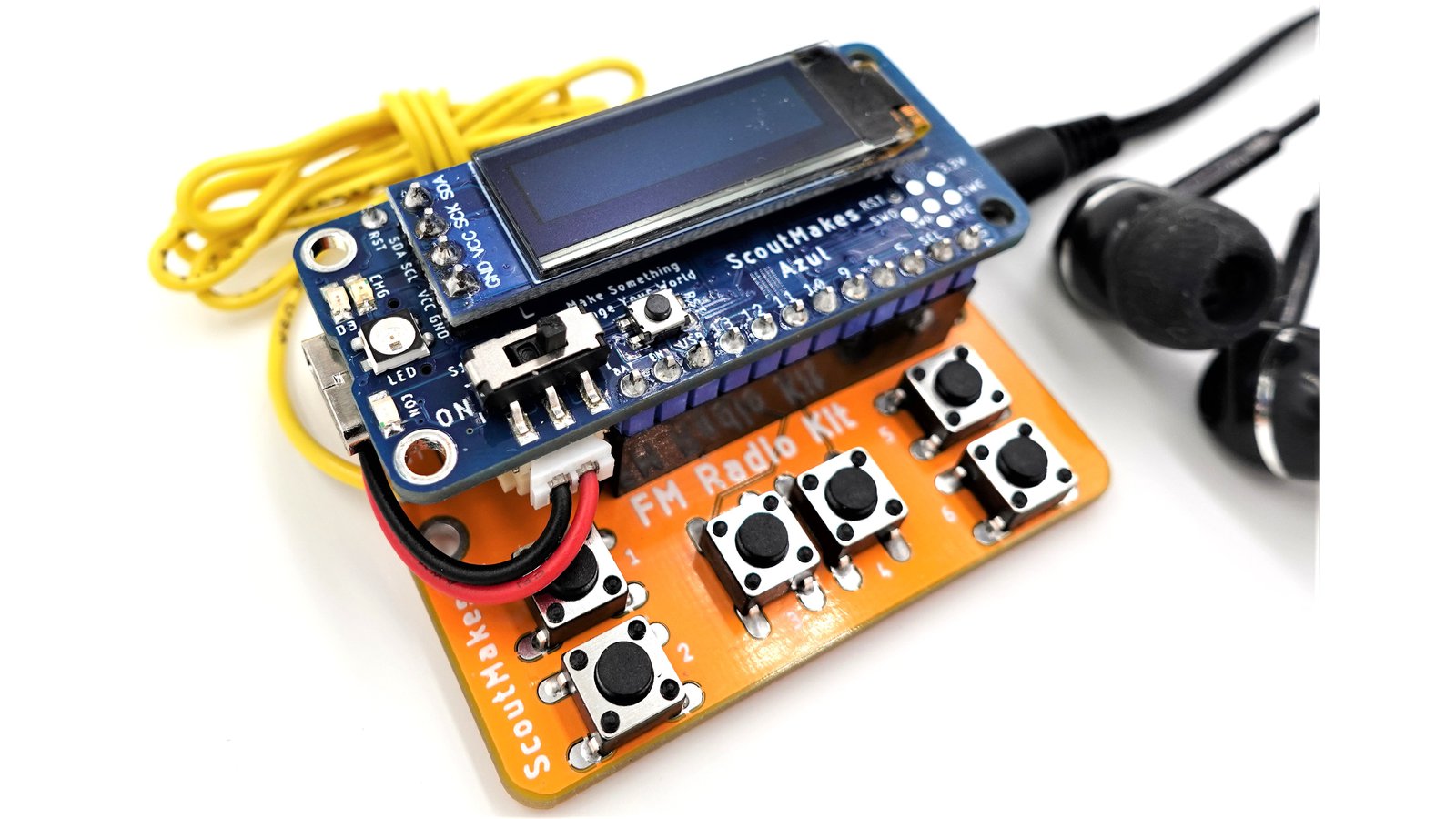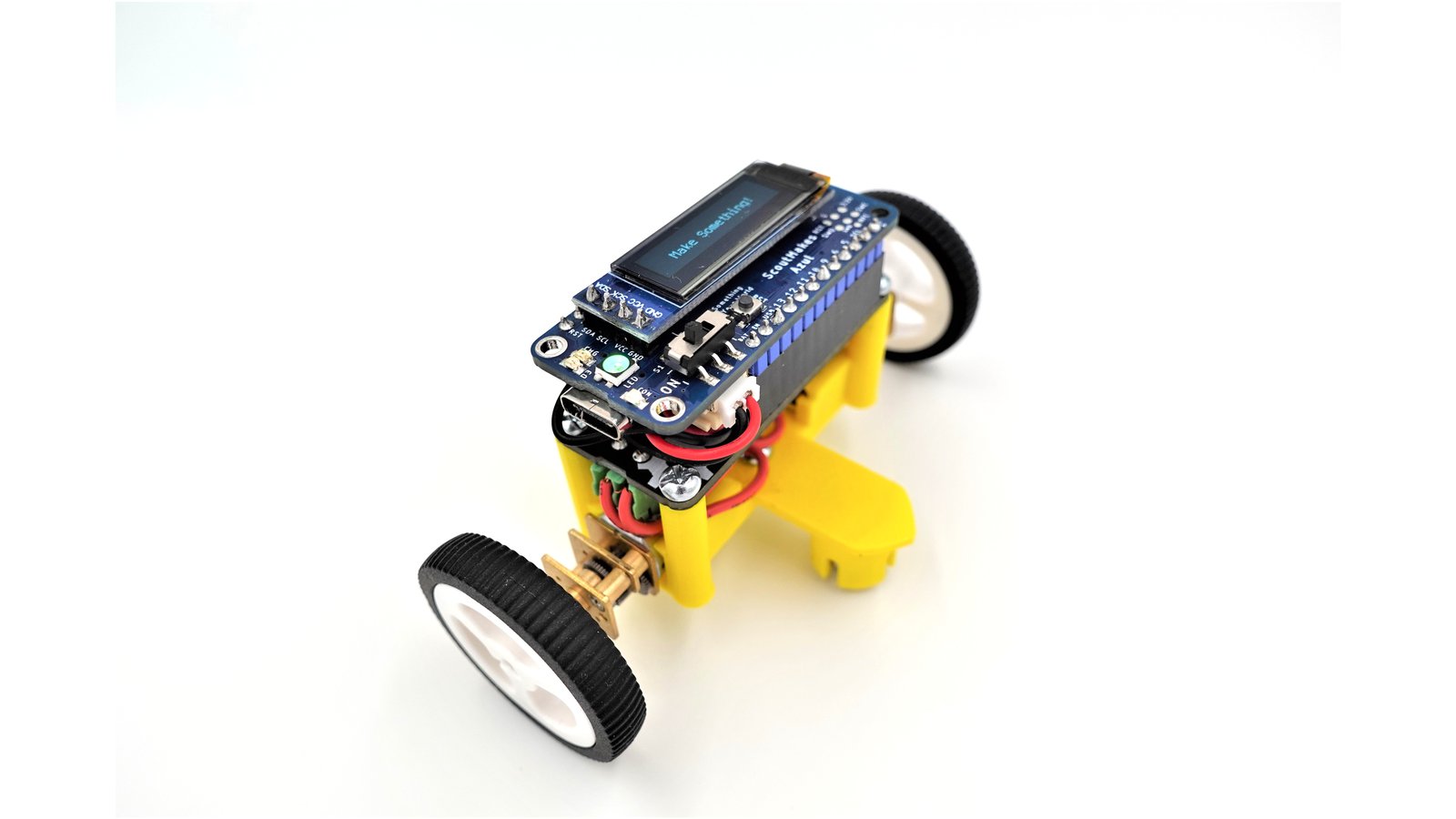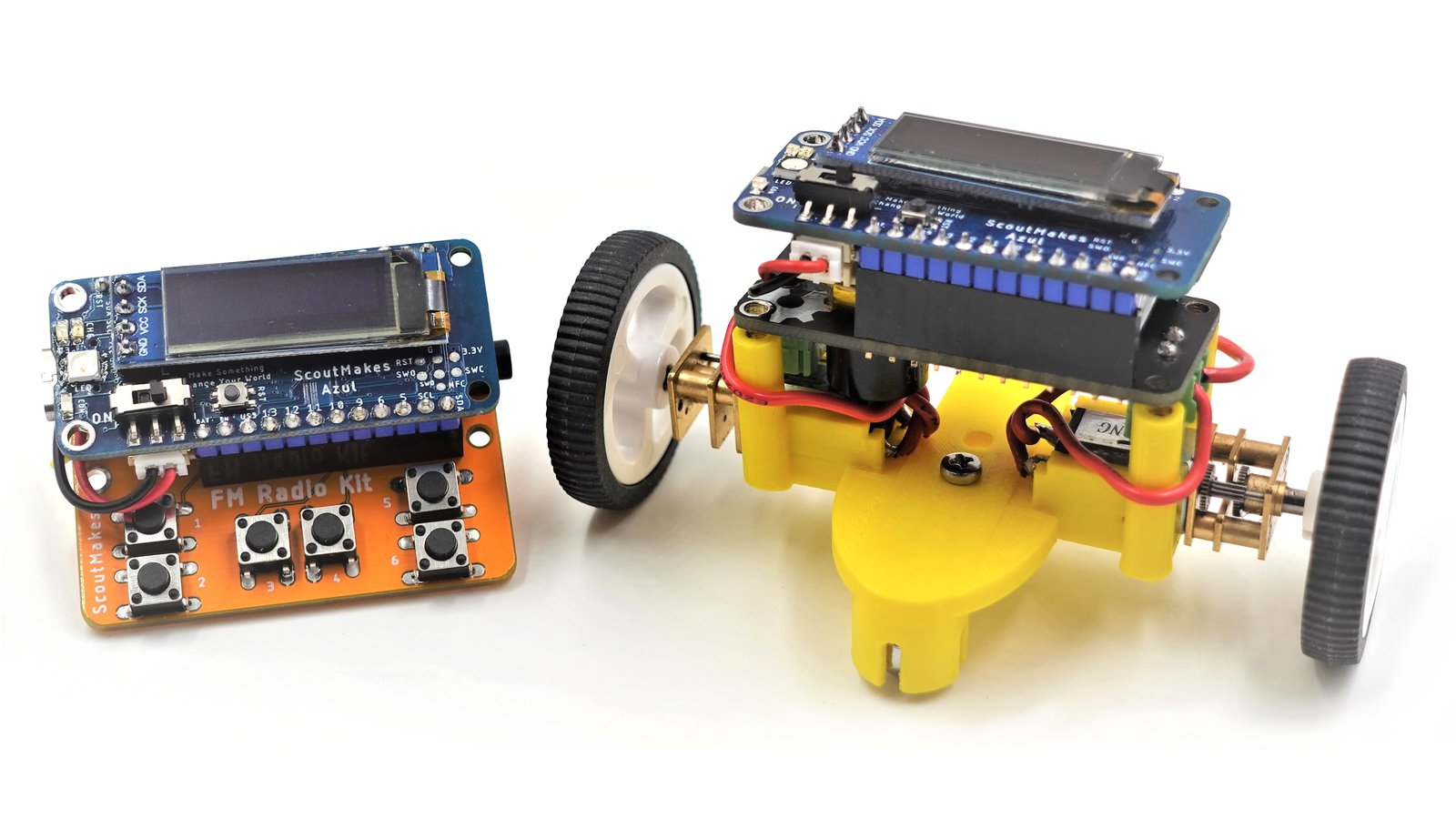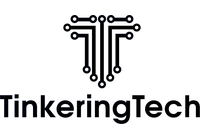TinkeringTech
Bluetooth
Nordic Semiconductor
TinkeringTech
Bluetooth
Nordic Semiconductor
The ScoutMakes STEM-Education Kits let you have fun while exploring the world of electronics. We are offering two self-contained, OSHWA-certified open hardware, battery-powered, Bluetooth-enabled kits: the ScoutMakes FM Radio Kit and the ScoutMakes Robot Kit. Each kit comes with all necessary mechanical hardware to ensure that your introduction to DIY microcontroller programming and electrical engineering is both enjoyable and educational.
| ScoutMakes FM Radio Kit | ScoutMakes Robot Kit | ScoutMakes Combo Kit | |
|---|---|---|---|
| ScoutMakes Azul BLE module | ✓ | ✓ | ✓ |
| FM radio expansion board | ✓ | ✓ | |
| Robot Expansion Module & robot hardware | ✓ | ✓ | |
| 128 x 32 OLED display | ✓ | ✓ | ✓ |
| Headphones | ✓ | ✓ | |
| 105 mAH Lithium Polymer battery | ✓ | ✓ | ✓ |
| Type-C USB cable | ✓ | ✓ | ✓ |
| Price | $55 | $70 | $89 |
10% of our proceeds, after fees have been covered, will be donated to Black Girls Code, a non-profit organization that introduces girls of color between the ages of 7 and 17 to computer science and technology.
At the heart of these kits is our ScoutMakes Azul board, which is an open source development platform that allows you to add Bluetooth Low Energy (BLE) capabilities to any project. Featuring the 32-bit ARM Cortex-M4 (nRF52840) processor from Nordic Semiconductors, it conforms to the AdaFruit Feather form factor, runs CircuitPython or Arduino, provides native support for USB Type-C, and includes a built-in 128 × 32 pixel OLED display.
Pre-programmed with a UF2 bootloader, the Azul board that arrives with your kit will be ready to run your code right out of the box! Whether you prefer CircuitPython or C, all you have to do is fire up a code editor like Mu or an IDE like Arduino and start tinkering.
To test your code—or the sample code we provide—simply pair your ScoutMakes Azul board with AdaFruit’s Bluefruit application, which is available for both Android and iOS devices. Bluefruit includes a color picker, an eight-button controller, and the ability to pass along sensor measurements (including quaternion, accelerometer, gyroscope, magnetometer, and GPS data). It uses BLE to transmit instructions from your mobile device to the Azul board’s nRF52, which is then responsible for interpreting those instructions, whether you’re cranking up the volume on your radio, sending your robot careening across the room, or issuing commands to a creation of your very own.
For many of us, the construction of a classic FM radio was one of the very first projects we took on when getting started with DIY electronics. And for good reason. Radio waves are fascinating, they’re everywhere, and they’re free! Radio brings all kinds of information and entertainment—including music, news, and sports—to people all over the world. It remains an extremely popular medium for content delivery, and it doesn’t even require an Internet connection. The ScoutMakes FM Radio Kit provides an engaging exploration of Frequency Modulation (FM) radio. And, thanks to BLE, you can control it from across the room.
To build an FM radio receiver, you would typically need several components, including resistors, capacitors, transistors, and an amplifier. But thanks to advancements in technology, there are now several single-chip, integrated-circuit (IC) receivers on the market. To make our FM Radio Kit as accessible and easy-to-use as possible, we chose one such chip—the RDA5807M, which is a broadcast FM stereo tuner with a fully integrated synthesizer and a powerful low-IF digital audio processor—and we baked it into a PCB that complies with the Adafruit Feather standard. The chip is programmable by way of a CircuitPython library.
The ScoutMakes FM Radio Kit can also receive and process Radio Data Service (RDS) content. RDS is a communications protocol for embedding small amounts of digital data within conventional FM radio broadcasts. Examples include the time, the station identification, and programming information. (If you have a modern car stereo, you’ve probably seen RDS used to display the name of the song that is playing.)
Robotics and industrial automation are everywhere these days. Robots help build, package, and ship everything from your breakfast cereal to your car. With that in mind, we designed the ScoutMakes Robot kit to help those with an interest in robotics learn the basics. With it, you will create a simple, wheeled robot while developing a familiarity with concepts like mechanical assembly and motor control. This kit also includes a piezoelectric buzzer and NeoPixels that allow your robot to play sounds and glow while it’s moving around.
And, thanks to the included Azul board, you’ll be able to send instructions to your robot, over BLE, from an app on your iOS or Android device. To control it, you can simply tilt your device in the direction of travel.
Assembly instructions for the kits are available at https://scoutmakes.com/pages/learn
In order to assemble the kits, you will need a soldering iron. I recommend this soldering kit from Amazon. It has many useful tools for electronics, including a screwdriver.
The ScoutMakes STEM Education Kits are all certified open hardware and all source files are available on GitHub. You can also find us on YouTube and Instagram or you can reach out to us using the Ask a technical question link on our campaign page.
Produced by TinkeringTech in Kensington, MD.
Sold and shipped by Crowd Supply.

Everything you need to get started: an Azul BLE development board with a 128 x 32 pixel OLED display, an FM radio expansion module, headphones, a USB Type-C cable, and a 100 mAh Lithium Polymer battery.

Everything you need to get started: an Azul BLE development board with a 128 x 32 pixel OLED display, a robot expansion module, two N20 motors, two wheels, a USB Type-C cable, a 100 mAh Lithium Polymer battery, a 3D printed frame, screws, and mounting hardware

Everything you need to assemble both the FM Radio kit and the Robot kit: a single Azul BLE development board with a 128 x 32 pixel OLED display, an FM radio expansion module, headphones, a robot expansion board, a USB Type-C cable, a 100 mAh Lithium Polymer battery, headphones, two N20 motors, two wheels, a 3D printed frame, screws, and mounting hardware

TinkeringTech is an open source electronics company dedicated to encouraging everyone, young and old, to learn engineering.